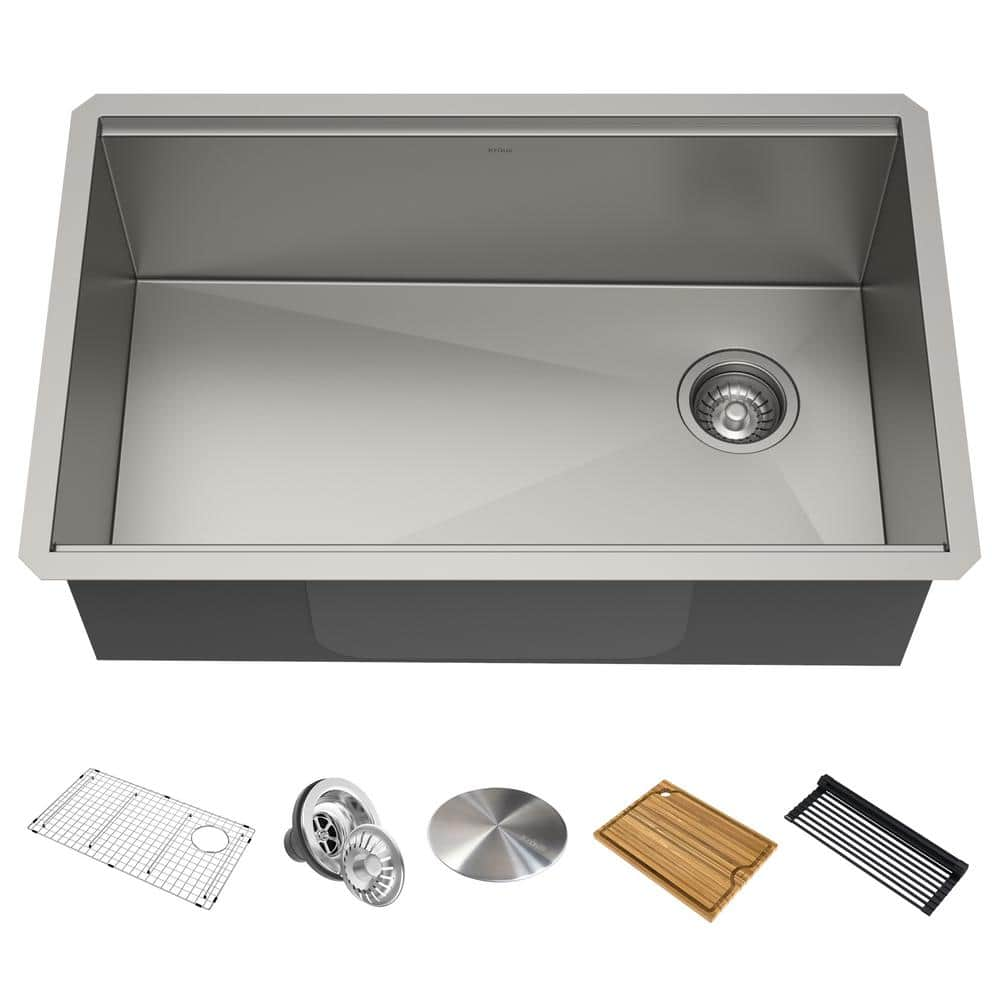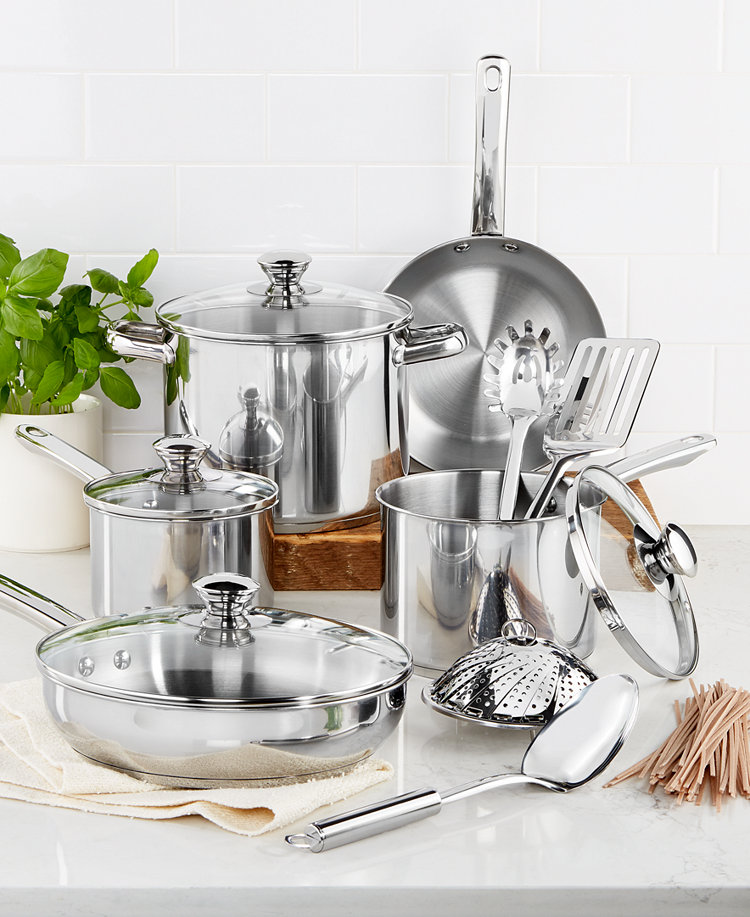KRAUS Kore Workstation 32-inch Undermount 16 Gauge Single Bowl Stainless Steel Kitchen Sink with Accessories (Pack of 5)
Sink: 32 in. x 19 in. x 10 in. minimum cabinet size 36 in. Kore workstation sink inspired by professional kitchens. Integrated ledge: wash, dry and slice without using counterspace.
Kore Workstations feature an integrated ledge system that allows you to slide accessories across the sink, transforming it into a full-service prep station. Smart design maximizes counter space by allowing you to work right over the sink. Equipped with a premium chef’s kit including a roll-up dish drying rack and bamboo cutting board that take the functionality of your kitchen sink to a whole new level.
- Workstation sink with integrated ledge that allows you to slide custom accessories across the sink to streamline meal prep and cleanup
- Engineered to be exceptional: smart design adds valuable counter space by allowing you to work right over the sink, perfect for a kitchen of any size
- 5-piece chefs kit: to make full use of your workstation sink the package includes a solid bamboo cutting board and a multi-purpose roll-up dish drying rack that allows you to rinse produce and drip-dry dishes right over the sink
- Heavy-duty 16-Gauge steel: made with TRU16, the thickest stainless steel on the market, this ultra durable sink is highly resistant to corrosion and dents
- Undermount installation creates a seamless transition from sink to countertop and makes it easy to wipe water and crumbs straight into the sink
- Spacious single bowl: deep high-capacity sink with tight-radius corners and offset drain creates an uninterrupted workspace for washing your largest cookware, like stock pots and baking sheets
- Resilient rust-resistant finish is easy to clean and will not dull from daily use
- Engineered for easy draining with rear off-set drain opening and gently sloped bottom with channel grooves that prevent water from pooling in the sink
- Fully insulated with noise defend: proprietary sound-dampening system with extra-thick pads and protective undercoating to absorb noise and vibration
- Roll-up dish drying rack: made from heavy-duty stainless steel coated with non-slip 100% food-safe silicone perfect for rinsing produce, drying dishes, and protecting countertops from hot items
- BAMBOO CUTTING BOARD: Naturally non-porous bamboo resists stains
- Stainless steel bottom grid: dishwasher-safe dish rack protects sink surface and keeps dishes elevated for optimal draining
- Drain assembly with cover: premium stainless steel drain assembly with strainer keeps debris out of the drainpipe; CapPro decorative drain cover conceals drain opening and garbage disposal for a seamless look
- Lifetime limited warranty: experience KRAUS quality with customer service that puts you first
- Outer sink dimensions: 32 in. L x 19 in. W x 10 in. D; minimum cabinet size: 36 in.
- Explore the full suite of kore sink accessories to maximize the functionality of your kore workstation sink
Additional information
| Actual Left to Right Length (In.) | 32 |
|---|---|
| Bowl Below Counter Depth (in.) | 10 |
| Bowl Front to Back Width (in.) | 16 |
| Bowl Left to Right Length (in.) | 30 |
| Bowl Top to Bottom Depth (in.) | 10.5 |
| Cut-Out Below Counter Depth (in.) | 10.5 |
| Cut-Out Depth (in.) | 19 |
| Cut-Out Width (in.) | 32 |
| Kitchen Sink Front to Back Width (In.) | 19 |
| Certifications and Listings | IAPMO Certified |
| Manufacturer Warranty | Limited Lifetime |






by Kimmy
I’m one month into having this and it’s great. The price is right and it looks good. I that it comes with the accessories and the large single bin feels spacious
by Laura
I’m very happy with this. I was concerned that my contractor wanted me to have a stainless sink rather than the ceramic. But It is very nice. It is nice and deep and I have no problem with it being one basin rather than two. It does seem to scratch very easily so beware of that. AND while I had been using Dawn Utlra platinum powerwash free & clear dish spray with my old sink, I started to see some problems with possible staining using it with this sink so I stopped. That is unfortunate if true as I live in a place where water availability is an increasing problem.
by James
Beautiful deep sink. Nice to have the offset drain.
by Trisha
Beautiful, stylish, practical, and great quality for a very reasonable price as compared to other comparable brands!
by Mary
Love the size of this sink! My favorite accessory would be the roll up drain board that fits over on side of the sink.
by Morgan
This sink is a total game changer with being able to utilize a bunch of different accessories to make prepping and washing dishes a breeze. The low divider in the double bowl is the perfect height for still being able to wash large dishes without obstruction while also providing a surface to rest heavy pots/pans on. This sink is one of my favorite things about our kitchen and I love that it’s so easy to clean!